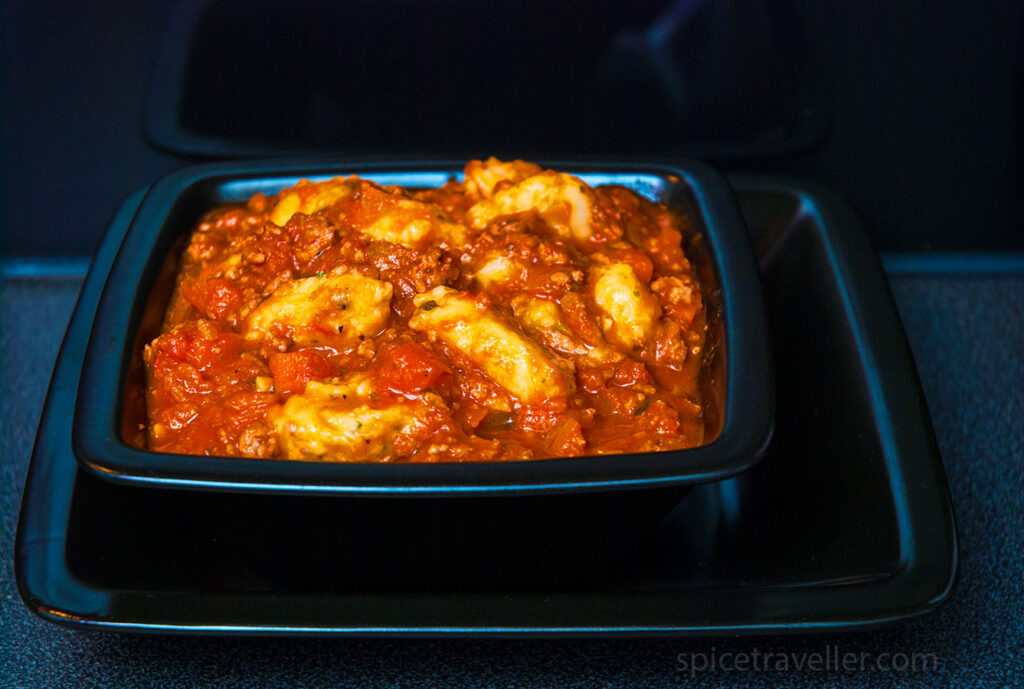Rich Italian meat sauce that blends finely minced meat with fragrant vegetables
This authentic Bolognese ragu sauce, a staple of Italian culinary heritage, possesses a fascinating history that spans centuries. This sumptuous and richly textured sauce, known for its harmony of flavours, has captivated palates across the globe.
The birthplace of Bolognese ragu is of course Bologna, Italy, a city steeped in gastronomic tradition. Its origins date back to medieval times, when a hearty meat sauce known as “ragù” was created. Derived from the French term “ragout,” signifying a slow-cooked meat stew. The Bolognese version was characterized by a medley of local ingredients, like beef and pork, tomatoes, onions, and aromatic herbs. By the 18th century, the foundations of what we now recognize as Bolognese ragu were firmly laid.
Bolognese ragu’s reputation extended beyond domestic borders. The sauce’s introduction to the wider world was facilitated by culinary enthusiasts, diplomats, and travellers. The nobleman Pellegrino Artusi included the Bolognese ragu recipe in his influential 1891 cookbook, “Science in the Kitchen and the Art of Eating Well”. It played a pivotal role in cementing the sauce’s status as an Italian culinary treasure.
Bolognese ragu transcends mere culinary significance; it has woven itself into the cultural fabric of Bologna. The “Sfida al Mattarello” competition, where participants roll out fresh pasta dough with wooden rolling pins, exemplifies the dedication to preserving traditional techniques. This sauce serves as a testament to the Italians’ passion for their gastronomic heritage and their commitment to passing it down through generations.
As culinary exchange flourished, Bolognese ragu underwent adaptations in various countries. The “spaghetti bolognese”, while not a faithful representation of the original, has become an iconic comfort dish enjoyed by many. It’s important to recognize that these adaptations, while embodying their own charm, diverge from the authentic essence of Bolognese ragu.
Spaghetti Bolognese: The Sneaky Cousin of Bolognese Ragu Sauce
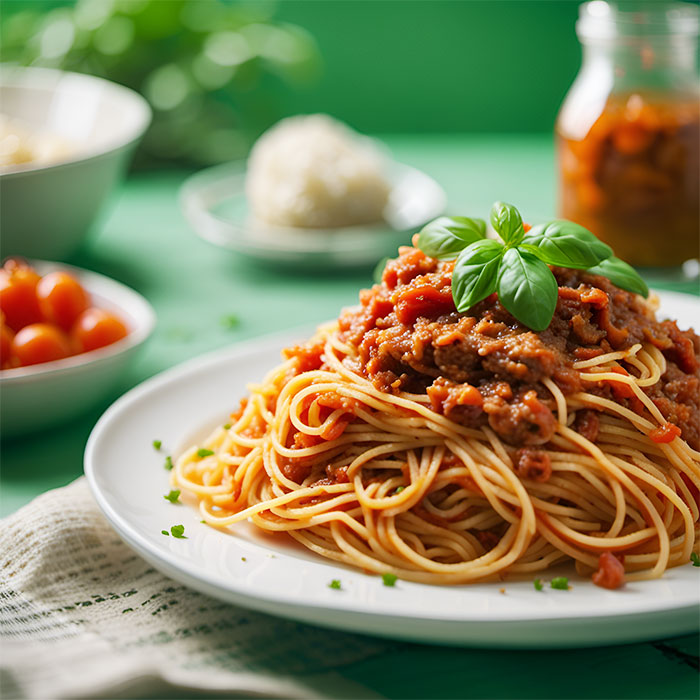
Ah, the age-old tale of mistaken culinary identity! A hearty plate of al dente spaghetti draped in a rich, tomato-based sauce, crowned with a flurry of grated cheese and basil leaves. Now, close your eyes and imagine a sun-drenched Italian terrace, the aroma of simmering pots wafting through the air. It’s a scene straight out of Italy, right? Well, not exactly.
Spaghetti Bolognese, despite its Italian-sounding moniker, isn’t exactly the poster child for authenticity. You see, the true star of this tale is the Bolognese ragu – a robust and slow-cooked meat sauce hailing from the gastronomical gem that is Bologna. This ragu is a celebration of flavours, carefully crafted with layers of tender meat, aromatic vegetables, and a hint of wine, all simmered to perfection. While spaghetti itself is undeniably Italian, its union with the ragu has evolved into something more… international. The fusion resulted in the globally beloved Spaghetti Bolognese. However, this dish often swaps the intricate dance of traditional ingredients for a more convenient, widespread version.
How did this mix-up happen? Blame it on the global culinary crossroads. The romantic allure of Italian cuisine combined with a dash of culinary creativity birthed the Spaghetti Bolognese we know today. It gained worldwide fame, transcending continents and cultures, finding a place on menus from London to Los Angeles.
The westernized version of “spaghetti bolognese” has taken on a life of its own, offering a quick and convenient way to enjoy the sauce. While the adaptation may bear some resemblance to the original, its evolution has led to significant deviations from the traditional recipe. Moreover, the inclusion of additional ingredients, along with variations in cooking techniques, and the utilization of various pasta shapes, has given rise to a myriad of unique culinary experiences
While “spaghetti bolognese” has become a popular and beloved dish around the world, it’s important to acknowledge its origins and distinct characteristics from authentic Bolognese ragu. The term “spagheti Bolognese” itself has been used widely to refer to the Italian-American creation of meat sauce served with pasta. However, it’s crucial to remember that the authentic Bolognese ragu is a timeless creation that embodies the essence of Italian culinary heritage.
The Sorelle Simini (Simini sisters) authored the book “Sfida al Mattarello,” which is the source of this recipe.
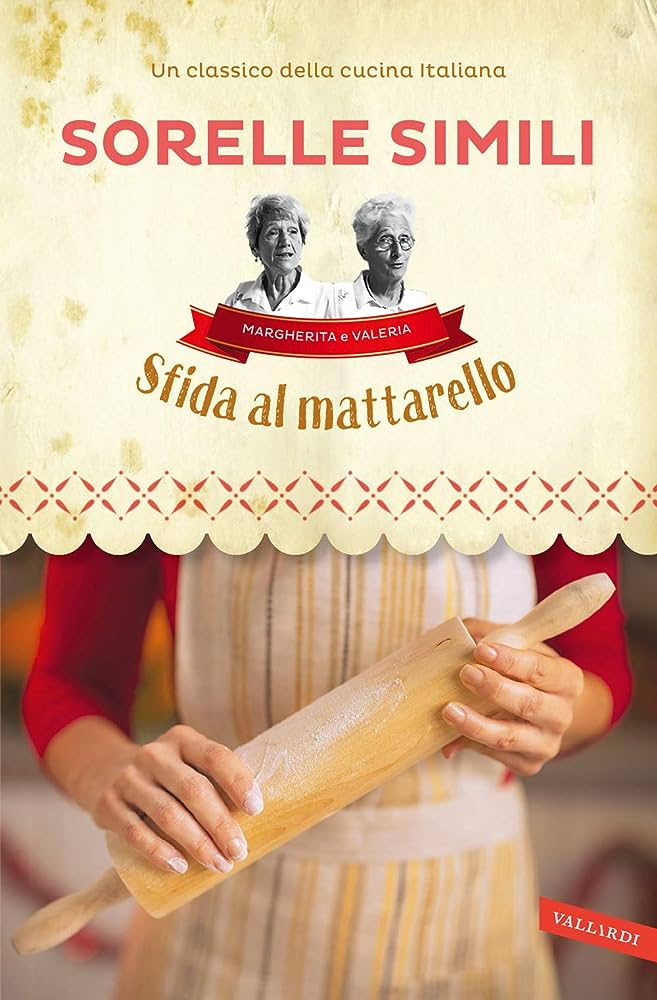
They embarked on their culinary journey in Bologna back in 1946, thus setting the stage for their gastronomic expertise. The historical origins of Bolognese Ragu trace back to the 16th century, albeit with slight variations from the contemporary rendition now embraced as a culinary tradition.
The Simili Sisters in their book suggest matching the sauce with the following pasta:
If using fresh pasta: Tagliatelle, Tortellini
If using dried pasta: Rigatoni, Conchiglie, Fusilli
And remember, most people love Spaghetti Bolognese, but genuine Italians never combine spaghetti with Bolognese sauce—this is a well-known fact! 😀 Spaghetti Bolognese originated outside of Italy, presumed to have developed in America. It often represents a simplified version of the refined Ragu sauce, gaining popularity in many other countries.
Meat – avoid using completely lean meat, as the sauce won’t have the authentic taste. A touch of fat adds depth, texture, and a rich flavour as it melds with vegetables and seasonings, creating a harmonious taste that defines this classic Italian dish.
Salt -make sure to add it after the meat has achieved that perfect browning.
Instead of prosciutto, you can use good-quality pancetta.
Liver – don’t omit it, I strongly suggest adding it – just a couple of pieces for flavour. You won’t notice the texture or taste of the liver in the end . It will break down completely in the sauce, but it will provide a special touch.
The sauce freezes well, so consider making a large batch.
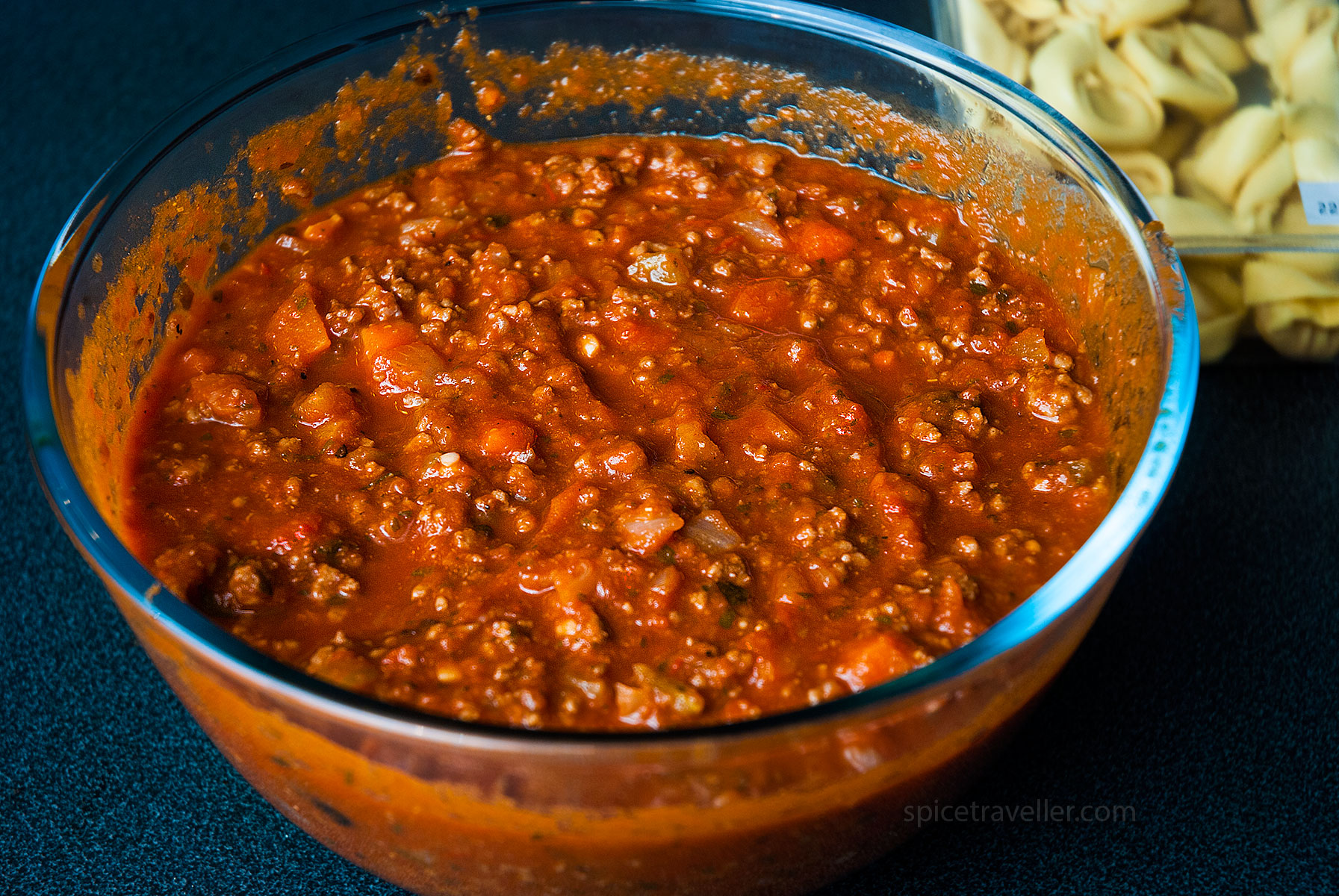
I didn’t fancy buying or making plain gnocchi, so I decided to get a bit inventive. Found some dried porcini mushrooms in my kitchen cupboard, and they turned out to be a perfect addition, along with a sprinkle of aromatic herbs. The gnocchi turned out spot on and a great addition to Bolognese ragu! Check this yummy recipe for Aromatic Mushroom Gnocchi .
Gnocchi are a perfect canvas for showcasing the rich and hearty flavours of Bolognese Ragu sauce. Their soft and pillowy texture provides an ideal contrast to the robustness of the sauce. As you twirl a forkful of gnocchi, it captures the velvety sauce, allowing each morsel to absorb and harmonize with the savory depth of the Bolognese.
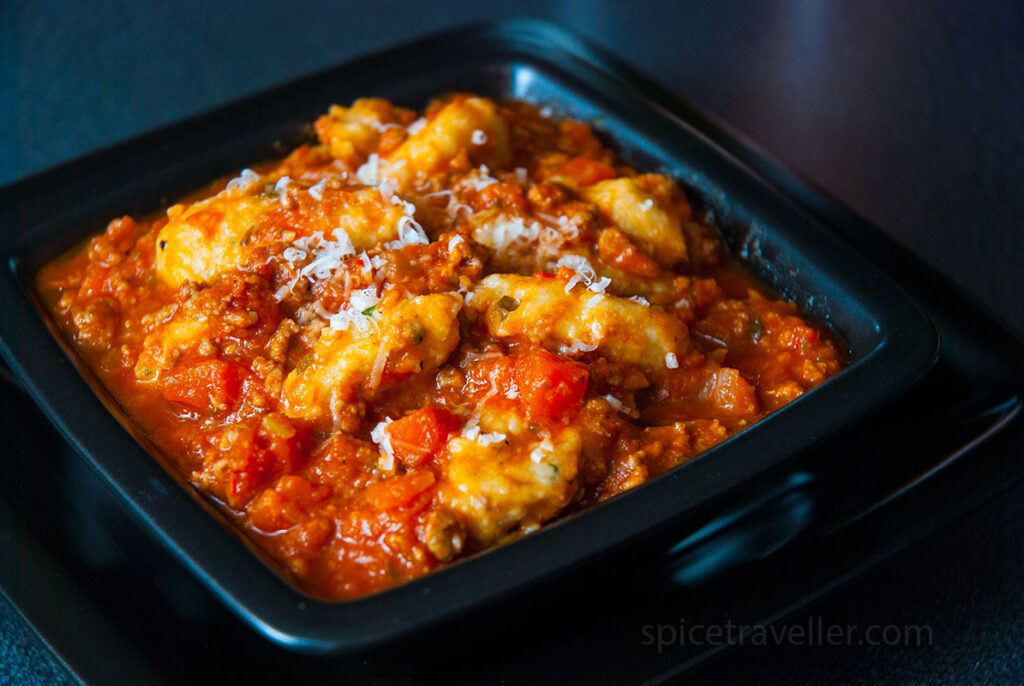
I thoroughly enjoy experimenting with various pasta choices in order to perfectly complement the exquisite richness of Bolognese Ragu. Sometimes, it’s classic tagliatelle, elegantly enveloping the meaty sauce. On other occasions, however , I enjoy cheese-filled ravioli or the softness of gnocchi. Even leftovers shine – a spoonful atop toast creates a gourmet lunch. Use this versatile sauce in quick lasagnas, hearty moussakas, or even with an American twist on pizza.
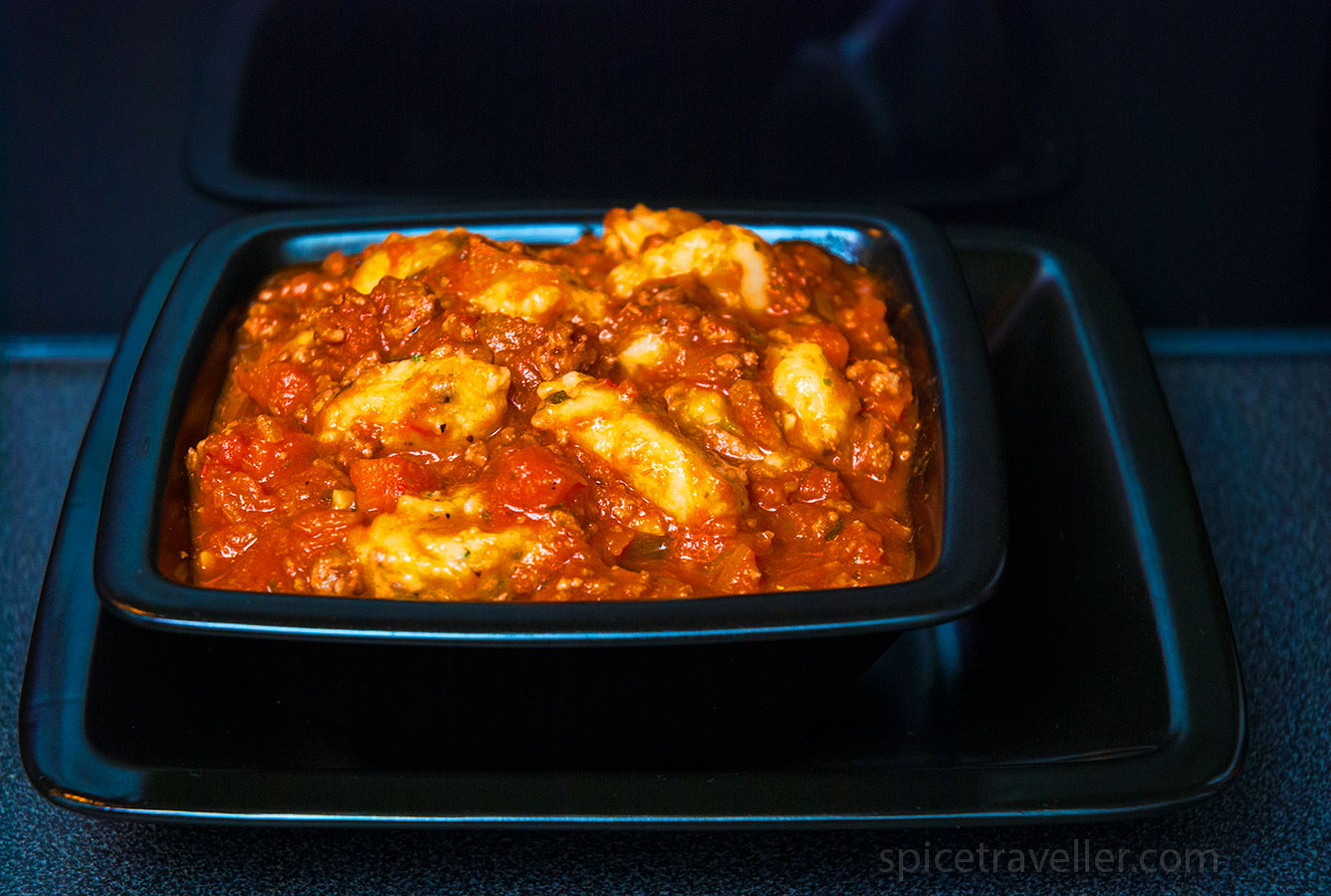
Authentic Bolognese Ragu Sauce : Old Traditional Recipe
Ingredients
For Soffritto
- 2-3 tbsp lard - or butter
- olive oil
- 3-4 large slices of Prosciutto di Parma - ham
- 4 cloves garlic - optional
- 2 onions
- 2 stalks of celery
- 2 carrots
- 2-3 pieces chicken livers
Main ingredients
- 300 g minced beef
- 150 g minced pork
- 250 ml hot full-fat milk
- 250 ml white wine
- 250 ml homemade beef broth
- 400 g peeled and chopped tomatoes - San Marzano variety if available
- 1/2 tsp nutmeg
- 1-2 tbsp thyme - optional
- 2-3 bay leaves - optional
- 2 teaspoons sugar
- 1/2 cup grated Parmigiano Reggiano cheese
- 1 teaspoon salt - or to taste
- 1/2 teaspoon freshly ground black pepper - or to taste
Instructions
- Begin by heating a combination of oil and butter in a large pot. Add finely chopped onions and prosciutto, and sauté for roughly 4-5 minutes until the onions acquire a translucent quality, taking care not to let them turn golden.
- Once the onions attain translucency, introduce finely diced celery and carrots to the mix. Continue to sauté for an additional 3 minutes while gently stirring the ingredients.
- Proceed to incorporate the finely chopped chicken livers. Prior to this, reposition the soffritto to one side of the pot, allowing space for the livers to briefly sear on the unoccupied side. After approximately 2 minutes, integrate them with the rest of the sautéed vegetables.
- Gradually add the mixed meats (a combination of beef and pork) in increments of 3-4 portions. Use a spatula to break down the meat thoroughly with each addition. It's important not to introduce all the meat at once. Sauté each portion of meat for about 2 minutes before moving on to the next.
- Blend in hot milk along with a touch of nutmeg, stirring to combine. Allow the mixture to simmer until the liquid reduces, a process that typically takes around 10-15 minutes.
- As the milk reduces, introduce half of the wine and stir. Once it reaches a boil, incorporate the remaining wine. Continue to cook over medium heat for about 10 minutes.
- In a smaller pot, warm up beef broth together with canned tomatoes, then integrate this mixture into the sauce. Adjust the flavour with sugar, salt, and pepper to your liking, and consider adding any preferred herbs for extra depth.
- Once the sauce comes to a boil, reduce the heat to its lowest setting and gently simmer, uncovered, for approximately 1 hour. If the sauce thickens too rapidly, it’s advisable to cover it instead of introducing additional liquid.
- At the end of cooking, set aside a small portion of the sauce and mix it with tagliatelle in a separate bowl.
- For serving, place the pasta that is already mixed with a portion of the sauce, into a serving bowl, pour over extra sauce, and generously grate with Parmesan cheese and season with pepper.
Notes
